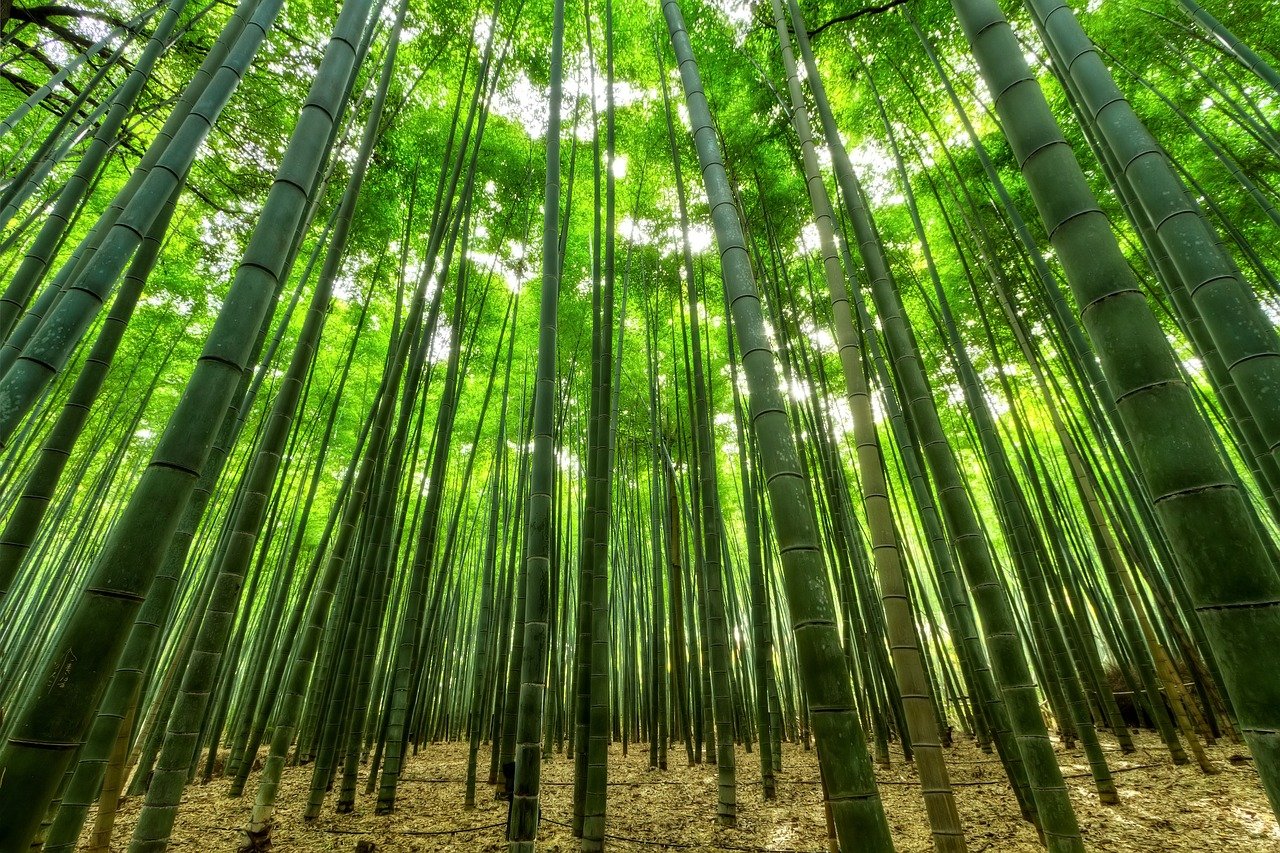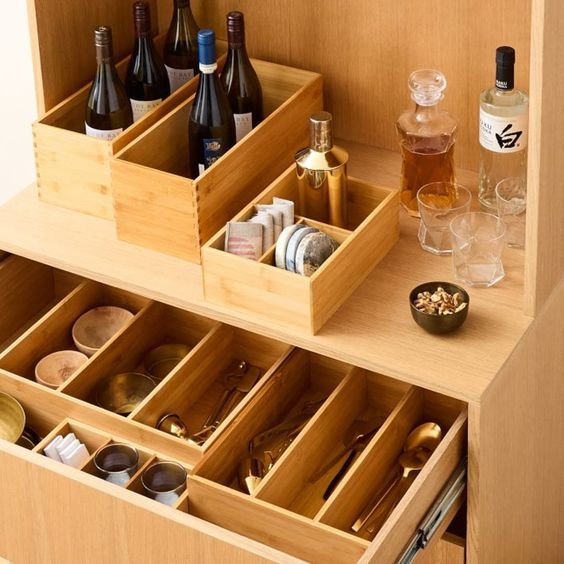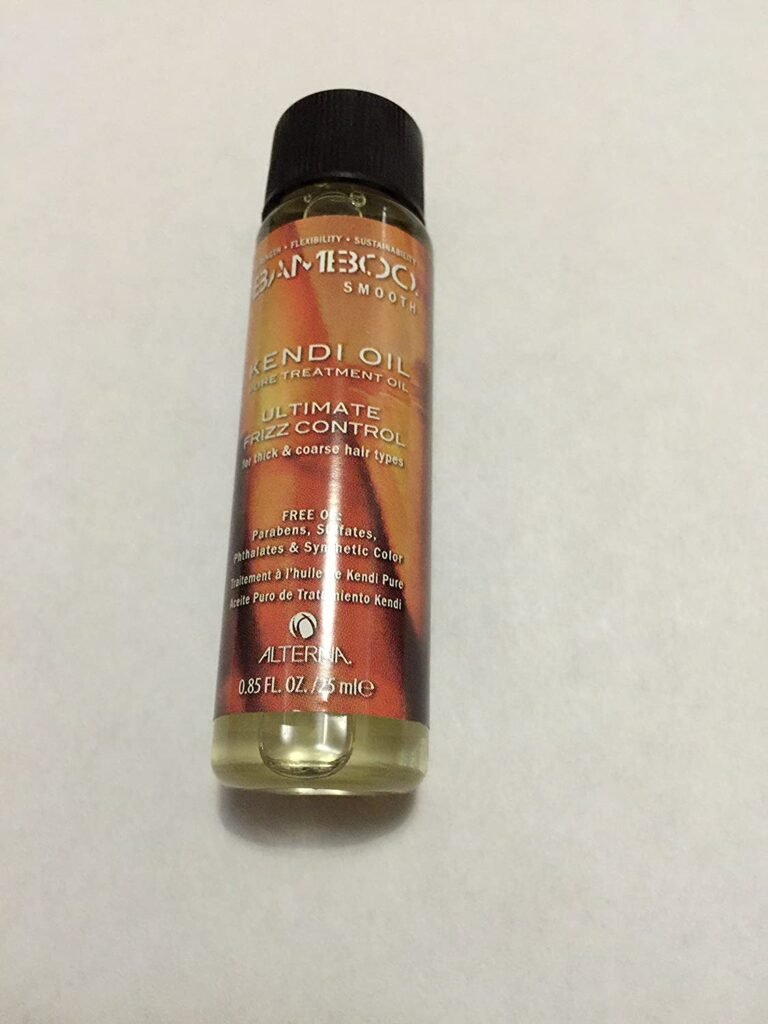An Expert Guide To What Bamboo Grows The Fastest

0Shares
What bamboo grows the fastest? As someone who has always been fascinated by the beauty and versatility of bamboo, I was curious to find out. Bamboo represents strength, resilience, and a love for nature. It’s a plant that is aesthetically pleasing and can be used in various ways, from furniture to food.
So if you want to grow your bamboo, it’s essential to know what bamboo grows the fastest as it can produce the quickest results. So, let’s delve into the bamboo world and find out what type of bamboo grows the fastest.
What Bamboo Grows the Fastest?

Getting your hands on the fastest-growing bamboo can be an exciting adventure. Imagine watching your garden flourish with greenery at an astonishing rate. Fast-growing bamboo is perfect for landscaping and nurturing privacy in your backyard. The world’s fastest-growing plant, bamboo, can reach heights of up to 91cm in just one day.
Many bamboo species grow quickly, including some from the Bambusa and Phyllostachys genera and others. If you want to know the best and fastest-growing species, here are some options to explore.
Moso Bamboo
- Height: (9-27 m) 30-90 ft
- Type: Running
- Diameter of the stem: (10-18 cm) 4-7 inches
- USDA zones: 7-10
- Light: Part shade, full sun
- Hardiness:(-18°C)0°F
- Water Requirements: Regular
- Soil: Well-draining, moist soil
Moso bamboo is speedy species that can grow up to 10 feet in just three weeks, making it a favorite among bamboo enthusiasts. What’s even more unique about Moso Bamboo is that it grows thicker as it gets taller, maintaining a solid five inches near its base even when it reaches an immense height of 10 feet. Thus, it can support its new height without bending or breaking.
This bamboo is impressive in its growth rate, and it’s also a versatile and valuable resource. It is used for everything from food to furniture. And because it’s a cold-hardy species, it can survive in temperatures as low as -18 degrees Celsius.
Golden Bamboo
- Height: (8-11 m)27-35 ft
- Type: Running
- Diameter of the stem: (4-5 cm) 1.5-2 in
- USDA zones: 7a-10
- Light: Part shade, full sun
- Hardiness: (-18 °C) 0 °F
- Water Requirements: High
- Soil: Well-draining, moist soil
The Golden Bamboo, or as some call it, the fishing pole bamboo. This plant is a great choice if you’re aiming to create a privacy screen in your yard since it grows rapidly and can create a thick grove when left unpruned. The Golden Bamboo can grow up to 35 feet (11 meters) tall, starting as a light green color and turning into a beautiful golden color with exposure to sunlight. Its unique coloring and unbridled growth habit can add a wondrous touch of nature to any landscape and quickly become your garden’s centerpiece.
The Golden Bamboo is a hardy species that can withstand temperatures as low as -18 degrees Celsius. It prefers wet soil and plenty of water to achieve maximum growth potential. If you keep up with its watering needs, you’ll have a tall, golden bamboo grove in no time.
Green Stripe Vivax
- Height: (12-21 m) 40-70 ft
- Type: Running
- Diameter of the stem: (13 cm) 5 in
- USDA zones: 6-10
- Light: shady areas, full sun
- Hardiness: (−20°C) -5°F
- Water Requirements: Moderate
- Soil: Well-draining, moist soil
The Green Stripe Vivax stand-out, with its striking yellow canes and the iconic green stripes that unfold like a paintbrush stroke. As a timber bamboo, it grows fast, soaring up to 45 feet tall in the blink of an eye, and serves as an excellent building material. However, don’t let its rapid growth and sturdiness fool you; the Green Stripe Vivax is a rare beauty worth savoring. With big, bold leaves and an imposing presence, this plant transforms any backyard into a calming oasis.
The Green Stripe Vivax bamboo is a hardy species that thrives in cooler climates and can withstand temperatures as low as -20 degrees Celsius. It requires moderate water, but not too much, as it prefers moist soil. It also needs plenty of sunshine, so make sure to choose a spot with direct sunlight to get the best results.
Red Margin
- Height: (12-18 m) 40-60 ft
- Type: Running
- Diameter of the stem: (5 cm) 2 in
- USDA zones: 5-10
- Light: part shade, full sun
- Hardiness: (-21°C) -5°F
- Water Requirements: Regular
- Soil: Well-draining, moist soil
The Red Margin bamboo is a fast-growing plant that will quickly provide the seclusion you crave, and it also adds a unique aesthetic to your yard with its striking red edges. However, be wary of its underground rhizomes, which can be invasive if left unchecked. So, keep an eye on its growth and trim it back to prevent an extreme spread. Under the right growing conditions, this running bamboo can reach impressive heights of 40-60 feet (12-18 meters). Imagine having a towering and vibrant bamboo forest in your backyard- it’s possible with Red Margin.
Silverstripe Bamboo
- Height: (3-9 m) 10-30 ft
- Type: Clumping
- Diameter of the stem: (5 cm) 2 in
- USDA zones: 6-9
- Light: part shade, full sun
- Hardiness: (-5°C to -10°C) 4°F to 23°F
- Water Requirements: Regular
- Soil: Well-draining, moist soil
When it comes to fast-growing bamboo, there is one type that stands out from the rest: Silverstripe Bamboo. This majestic plant, from the Bambusa genus, has a clumping habit and can reach heights of up to 25 feet at maturity – and it doesn’t take long to get there!
One thing that sets Silverstripe apart is its striking white stripes, which contrast beautifully with the rich green of the leaves. While it may not be as thick as some other types of bamboo, this plant is still an impressive sight to behold. And the best part? Silverstripe Bamboo is easy to grow, making it a perfect choice for anyone looking to add an exotic flair to their garden or backyard.
Phyllostachys Viridis
- Height: (9-10.6 m) 30-35 ft
- Type: Clumping
- Diameter of the stem: (7.6 cm) 3 in
- USDA zones: 6-9
- Light: part shade, full sun
- Hardiness: (-5°C to -10°C) 4°F to 23°F
- Water Requirements: Regular
- Soil: Well-draining, moist soil
This fast-growing timber bamboo thrives in warm climates and can reach up to 35 feet tall with over three inches in diameter culms. That’s some serious growth! Whether you want to add some lush greenery to your garden or start an eco-friendly building project, Phyllostachys Viridis is a bamboo you don’t want to overlook.
But there’s more to this bamboo than just its looks. It prefers well-draining, moist soil, so choose a spot with plenty of water without becoming too saturated. You’ll also want to give it lots of sunshine, which will help the plant thrive and reach its full potential. Overall, Phyllostachys Viridis is a hardy bamboo that makes an excellent addition to any garden.
These are just a few of the many types of bamboo that you can find, each with its unique beauty and features. Whatever type of bamboo you choose, make sure to do your research and provide proper care to get the best results.
Why Choose Fast-Growing Bamboo Over Slower-Growing Types
Not all bamboo is created equal; some types of bamboo are slower-growing than others, which can affect the quality and availability of the resource. In this article, we will explore why it is important to choose fast-growing bamboo over slower-growing types and the benefits that come with it.
1: Sustainability
The demand for bamboo has risen in recent years due to its sustainability factor. Bamboo can regenerate quickly and does not require replanting once harvested. This makes it a more viable and sustainable resource compared to slower-growing alternatives such as hardwood trees. Fast-growing bamboo can be harvested in as little as three years, whereas slower-growing types can take up to 20 years. By choosing fast-growing bamboo, we reduce the time required to replenish the resource and minimize the environmental impact.
2: Increased Supply
The faster-growing nature of bamboo means that a greater supply is available. In countries where bamboo is a primary resource, such as China and India, the demand is high for products made from bamboo. However, the supply is often limited due to the longer growing cycles of some bamboo types. Using fast-growing bamboo means increasing the supply to meet the growing demand.
3: Versatility
The versatility of bamboo is well-known, and it is used for everything from clothing, bamboo utensils to building materials. Fast-growing bamboo provides an even greater level of versatility due to the ability to produce it in large quantities. It means that you can produce more products and expand the range of products available.
4: Reduced Cost
Fast-growing bamboo can be produced at a lower cost than slower-growing types. This is because the shorter growing cycle requires fewer resources and less time to harvest. This cost savings can be passed on to consumers, making bamboo a more affordable option. Choosing fast-growing bamboo can help cut down the cost of some products without compromising quality.
5: Improved Quality
Contrary to popular beliefs, fast-growing bamboo is as strong and high quality as slower-growing types. Bamboo has a unique structure that gives it its strength, and research has shown that the quality of bamboo does not depend on its growth rate. In fact, some fast-growing bamboo types are stronger than others. Choosing fast-growing bamboo allows one to enjoy a superior quality product without waiting for it to mature.
Overall, fast-growing bamboo is superior for both sustainability and quality. It can be harvested quickly and made into a wide range of products at a lower cost.
Factors That Affect the Growth Rate of Bamboo

Bamboo can grow up to three feet in just one day under ideal conditions. However, if you’re wondering why some bamboo plants grow faster than others, various factors could affect their growth rate. Below are the factors and tips for caring for your bamboo plants to ensure healthy and speedy growth.
1: Climate
The climate in which you grow bamboo is essential to its growth rate. Bamboo thrives in tropical and subtropical regions with plenty of rainfall. If you live in a more temperate area, you can still grow bamboo, but you may need to provide extra water and fertilization to achieve healthy growth. Moreover, some bamboo species can tolerate low temperatures better than others.
2: Soil Quality
Bamboo requires well-draining soil that is rich in nutrients. If your soil isn’t too fertile or contains too much clay, it may stunt the growth of your bamboo plants. In this case, it’s recommended to amend the soil with organic matter, such as compost or manure, to improve the soil structure and nutrient content. Also, make sure your plants are getting the right amount of moisture.
3: Fertilization
Bamboo is a heavy feeder that requires regular fertilization to maintain healthy growth. An imbalanced or inadequate supply of nutrients can directly affect the plant’s growth rate and overall health. Therefore, it’s important to fertilize your bamboo plants every six months with a balanced, slow-release nitrogen, phosphorus, and potassium fertilizer.
4: Sunlight
Like most plants, bamboo needs sufficient sunlight to grow. However, some species have different light requirements than others. Generally speaking, bamboo prefers partial to full sun in the morning and afternoon. However, some species can tolerate more shade than others. Therefore, it’s essential to check the sunlight requirements of the specific bamboo species you’re growing and select the ideal location for planting accordingly.
5: Pest and Diseases
Bamboo is relatively resilient to pest and disease attacks. However, some common pests and diseases like bamboo mites, bamboo spider mites, and bamboo rust can harm your plants and slow down their growth. Regularly inspect your bamboo plants for any signs of pests or diseases and treat them promptly with eco-friendly solutions if needed.
As you can see, many factors can affect the growth rate of your bamboo plants, including climate, soil quality, fertilization, sunlight, and pest and disease management. Taking care of these factors can help your bamboo plants thrive and grow faster.
Common Problems with Fast-Growing Bamboo and How to Avoid Them
As with all plants, bamboo is susceptible to various problems, particularly growing fast. Below are the most common problems when growing bamboo and how to avoid them.
❗Overcrowding
One of the biggest things people need to improve when planting bamboo is overcrowding. Indeed, bamboo grows fast, but it also needs space to spread its roots. When you plant too many bamboo plants too close together, the roots become intertwined, which can affect the plants’ growth. In order to avoid overcrowding, ensure you adequately space out the bamboo plants when planting them. It is especially important for running bamboo, which spreads quickly.
❗Invasive Species
Another problem with fast-growing bamboo is the potential for the plants to become invasive. Some bamboo species can take over your garden and grow out of control if not properly contained. To avoid this, always research and choose non-invasive varieties of bamboo. If you’re unsure which species to plant, consult a local plant expert or nursery.
❗Sunburn and Drought
Bamboo is a hardy plant that can withstand harsh weather conditions, but an excess of the same may harm the plant. Dry weather or the sun’s intense heat can burn the leaves and make the plant vulnerable to pests and disease. Ensure the bamboo is planted in the right spot to receive enough water, nutrients, and sunlight. Living in hot climates, you can install light shade covers to protect the plant from direct sunlight. In drought conditions, ensure the bamboo receives adequate water to keep it growing and healthy.
❗Nutrient Deficiency
Fast-growing bamboo requires plenty of nutrients to sustain its rapid growth. If the soil is deficient in nutrients, the plants may not grow as they should and may be more prone to diseases. To avoid this, ensure you’re regularly fertilizing your bamboo plants with a balanced fertilizer. You can also use compost or manure to add nutrients to the soil.
❗Improper Harvesting
Improper harvest methods can lead to damage to the bamboo plant, which can affect its regenerative potential. Harvest bamboo at the right time by checking the node to see if it is sufficiently mature before cutting it down. Cut bamboo at an angle, which can prevent direct water accumulation; it is essential for maintaining bamboo’s health.
Overall, the key to successful bamboo growth is proper care and maintenance. If you follow these tips, your bamboo plants will thrive and reach their full potential.
FAQs About Bamboo Plant
How fast does bamboo grow in a week?
There are different types of bamboo, each with its unique growth rates. Some species can grow up to 91 cm (3 ft) in a single day, while others may only grow a few inches. Factors such as climate, soil quality, and water availability can also impact bamboo growth.
Does bamboo take 5 years to grow?
While some bamboo species can take up to five years to reach maturity, others can grow as quickly as a few months. The growth rate depends on various factors mentioned earlier. Additionally, the way bamboo is harvested also affects its growth cycle.
What is a tropical giant bamboo?
This giant bamboo is a species of bamboo that can reach up to 40 meters tall. It is one of the most popular types of bamboo due to its size and the durability of its wood. This type of bamboo is perfect for construction projects, making furniture, and even as an impressive decorative plant for your garden.
What is the easiest bamboo to grow?
Fargesia sp. is one of the easiest bamboo species to grow. They are cold-hardy and can survive in frosty temperatures. Additionally, they don’t require a lot of sunshine to grow, which makes them perfect for placing under trees or in shady spots. With proper care, they can grow up to 6 feet tall.
How can I make my bamboo grow super fast?
To make your bamboo grow super fast, you must ensure they have plenty of water, nutrients, and sunlight. Keep the soil moist at all times, and fertilize it regularly. Additionally, pruning your bamboo will encourage new growth and keep the plant healthy.
What is the strongest bamboo plant?
Guadua bamboo is one of the strongest species of bamboo. It is indigenous to South America and can reach up to 30 meters tall. The wood of Guadua bamboo is incredibly strong, making it an excellent choice for construction purposes.
Does bamboo regrow when cut?
Yes, bamboo regrows when cut. Bamboo plants have a unique ability to regenerate from the roots of an existing plant. After cutting, the root will produce new shoots, and within a few months, the plant will grow back to its original size. However, managing your bamboo by pruning and cutting only when necessary is essential to ensure proper growth and health.
What is the most expensive type of bamboo? (Moso bamboo)
Moso bamboo is arguably the most expensive type of bamboo. It is also the largest species of bamboo in China, growing up to 75 feet tall. The wood of Moso bamboo is dense, hard, and durable, making it perfect for furniture, flooring, and building materials.
Final Words
After all of our research on what bamboo grows the fastest, it’s clear that the Moso bamboo is the fastest-growing bamboo plant. However, you can still consider all the other varieties above, depending on the purpose of your project. Just follow the tips and guidelines for proper care and maintenance, and your bamboo plant will grow healthy and strong.
0Shares






